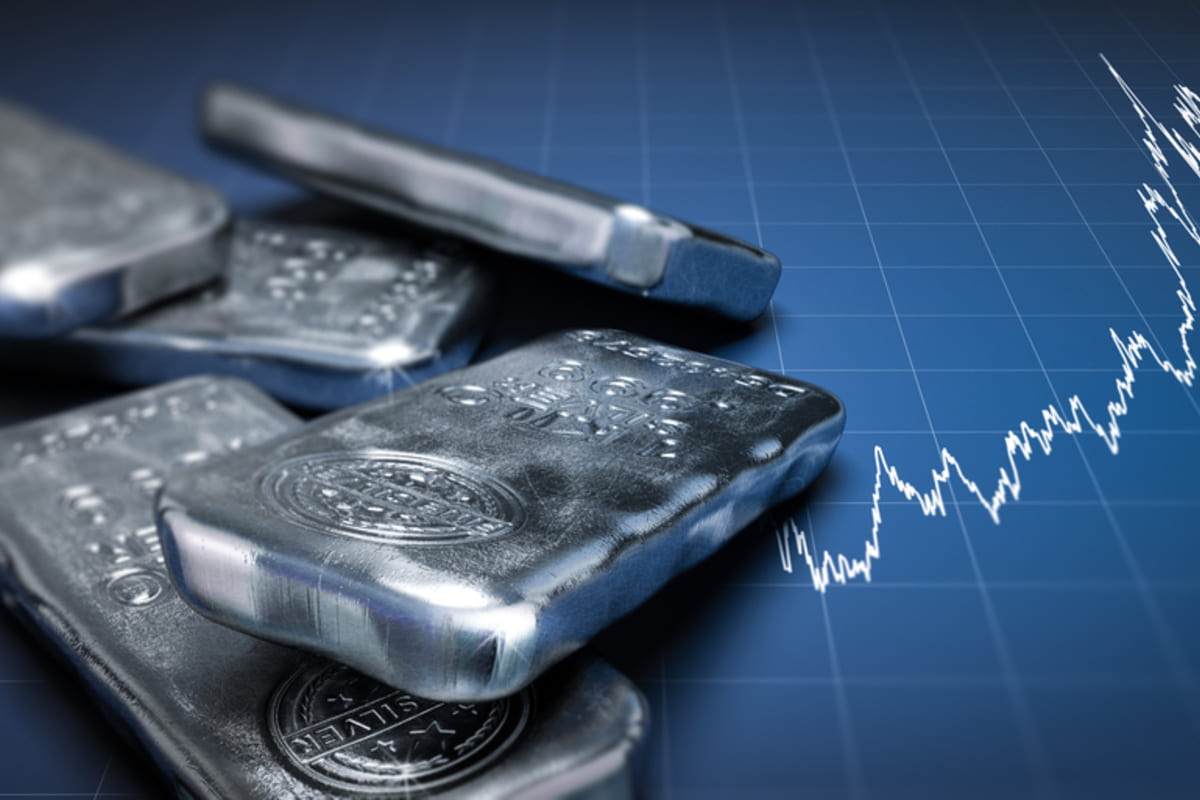Demand from sectors like solar energy and EVs boosts silver’s industrial consumption outlook
Silver prices surged sharply on Monday, breaking the $47 mark for the first time. The metal rose by 1.53 percent to $46.78 per ounce, driven by optimistic expectations of lower real interest rates and tightening supply dynamics. Earlier, spot silver even touched $47.04 per ounce, marking a fresh high amid robust market sentiment. This rally was supported by the recent release of the U.S. Personal Consumption Expenditures (PCE) report, which confirmed contained inflation pressures, reinforcing optimism that the Federal Reserve might further cut interest rates later this year. Lower interest rates reduce the opportunity cost of holding non-yielding assets like silver, thus boosting investor demand.
On the economic front, U.S. personal spending rose by 0.6 percent in August, surpassing expectations and indicating steady economic momentum. This economic backdrop supports silver’s appeal both as an investment hedge and as an industrial metal. Demand from industrial sectors remains strong, particularly in areas driving technological and energy transitions such as solar energy, electric vehicles (EVs), and electronics manufacturing. Industrial silver consumption is expected to stay above 700 million ounces (Moz) annually, continuing a trend of record demand driven by these sectors.
However, silver’s supply side remains constrained. Unlike primary metals, silver largely comes as a byproduct of copper, lead, and zinc mining, which limits the responsiveness of silver production to rising prices. Estimated global silver output is projected near 844 Moz in 2025, a figure that contributes to a continued structural supply deficit in the market. The Silver Institute predicts that 2025 will mark the fifth consecutive year of annual deficits, with demand exceeding supply by over 100 Moz. This persistent deficit underlines fundamental tightness in silver availability and supports a bullish price outlook.
Rising interest in silver ETPs
Silver-backed exchange-traded products (ETPs) have also attracted strong investor interest. In the first half of 2025, ETP holdings increased by 95 Moz to reach a total of 1.13 billion ounces, approaching historic highs seen in previous years. This surge reflects heightened investment appetite as silver’s bullish narrative gains strength amid global economic uncertainty and demand growth from green technologies. Regionally, retail silver investment has been particularly notable in India, where demand rose about 7 percent year-on-year despite a temporary drop in imports earlier this year. Europe’s silver investment market is recovering as well, albeit from a lower base, contributing to the global investment demand picture.
From a technical perspective, the silver market is experiencing short covering, evidenced by a 3.84 percent drop in open interest to 16,751 contracts, coinciding with a significant price rise complemented by gains in the Indian rupee equivalent. Key technical support levels stand at 138,200 rupees, with a downside test at 134,510 potentially in sight if this support is broken. Resistance is found at 143,885 rupees, with a strong breach potentially driving prices up to 145,880 rupees.
Industrial and investment drivers
Silver’s role in industrial innovation, especially in clean technology, is a major factor underpinning its demand. The rapid adoption of EVs, which require significantly more silver for batteries, circuitry, and charging systems than traditional vehicles, is a critical driver. Combined with solar energy’s expanding footprint—where silver’s high electrical conductivity is essential to photovoltaic cells—demand for silver is poised to increase further. These sectors alone consumed record amounts of silver in 2024 and are projected to push industrial consumption above 700 Moz in 2025. This shift towards sustainable energy technologies is rapidly altering silver’s demand landscape.
Meanwhile, the silver supply side remains challenged by the fact that about 70 percent of production comes as a byproduct of base metal mining. This means silver supply is less reactive to price changes since primary base metals dictate mining output priorities. Additionally, supply growth is hindered by factors such as declining ore grades, capital investment delays, and regulatory hurdles in key mining regions, helping sustain the supply deficit and maintaining tight market conditions.
Read more: Silver hits 14-year high as Fed rate cut bets lift metal’s appeal
Strong performance in 2025
Silver has been one of the best-performing commodities in 2025, climbing from around $29 per ounce in January to close to $47 at the end of September—a remarkable gain of over 55 percent. This surge has outpaced gold in percentage terms and is underpinned by the balancing act between strong industrial demand, investment inflows, and limited new supply. Analysts expect silver prices to potentially reach or surpass $50 per ounce in the coming months if the current trends persist.
Investor sentiment remains upbeat, supported by the increased inflows into silver ETFs, which have posted gains around 54 percent year-to-date in leading funds. This investment momentum is partly driven by fears of supply disruptions, including tariffs on copper imports—an indirect but influential factor—as well as expectations of interest rate cuts by the Fed easing the cost of holding non-yielding assets like silver.
India continues to be a significant growth market for silver investment, reflecting cultural and industrial importance. Despite reduced imports earlier in 2025, silver buying by investors and industrial consumers is expected to rebound, supporting prices internationally. European markets are also gradually recovering, boosting global demand dynamics.
